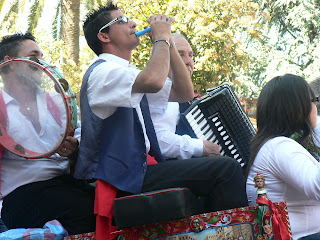St. Alfio Festival Celebrates Life of 3 Slain Brothers

Like most stories of saints, this history behind this festival honoring three brothers/saints called 'Festa di Alfio, Filadelfo, and Cirino' is the stuff of Hollywood movies -- violence, blood and tragedy.
In 250 AD, an edict was issued tha all Christians must demonstrate state allegiance by worshiping the emperor and the Roman gods.
Because brothers Alfio, Filadelfo and Cirino came from a highly regarded noble family, Roman authorities hoped to get a public renunciation. After all, the Romans killed their mother when she failed to comply and their father had fled leaving them behind.
When the brothers refused to renounce Christ, they were sent to Sicily. The brothers landed in Messina on August 25, 252 AD and were turned over to a Roman patriot named Tertullo, notorious for his ruthless interrogation and torture techniques.
They were marched with a heavy beam strapped to their shoulders. The brothers arrived in the village of Trecastagni on September 1, where they rested for the night.
Word spread fast about the plight of the brothers. Miracles were said to take place in towns they passed through and their story inspired more Christian conversions.
The brothers were marched to Lentini, where their death awaited. Alfio's tongue was torn out with a pair of tongs, a gridiron set over coals for Filadelfo, and a cauldron filled with hot oil for Cirino.
All were martyred on May 10 (the day of the feast) - a fate that earned them the everlasting love and respect of Sicilians.
Their tombs remain in Lentini beneath the Church of Sant'Alfio.

































